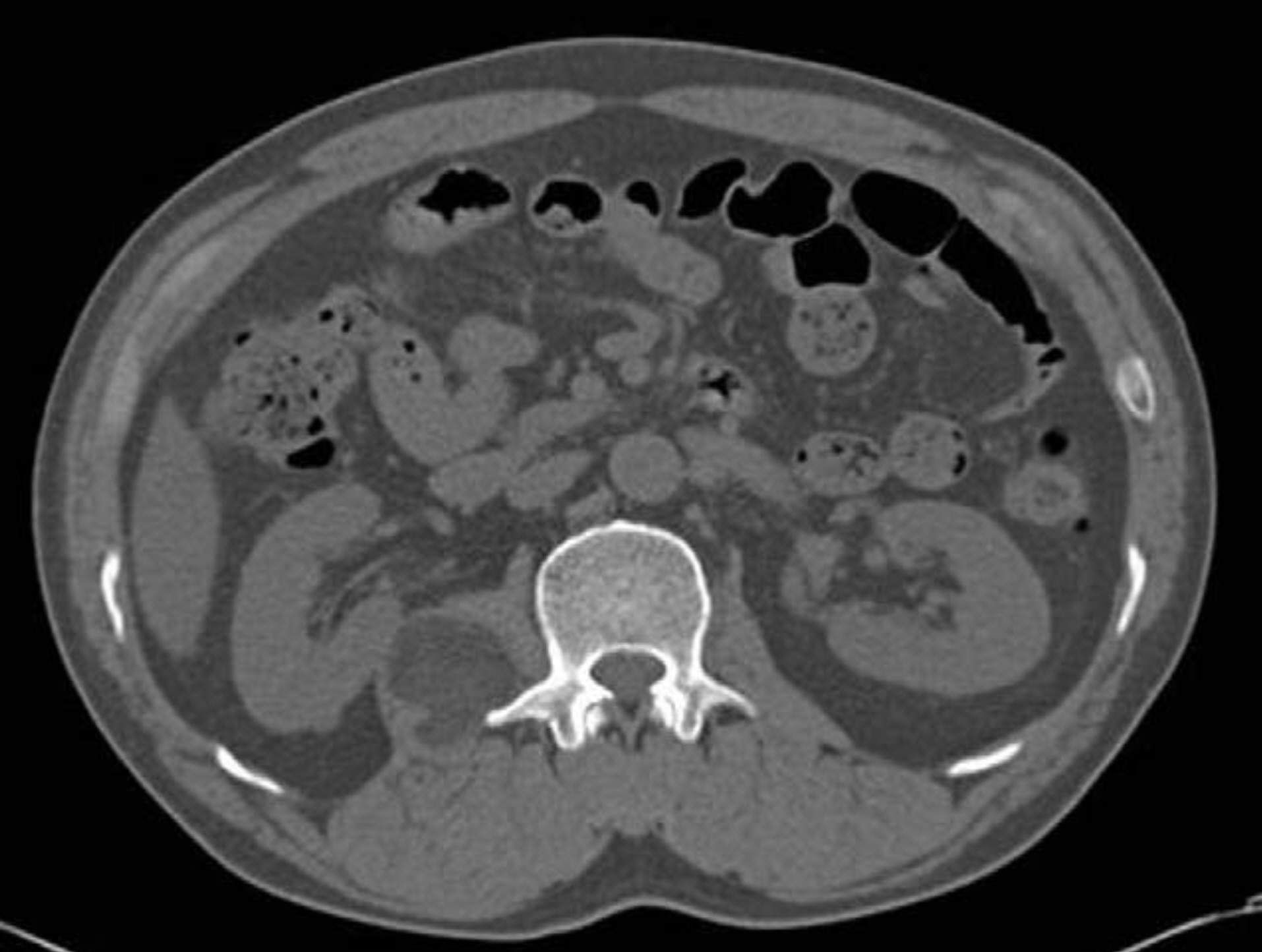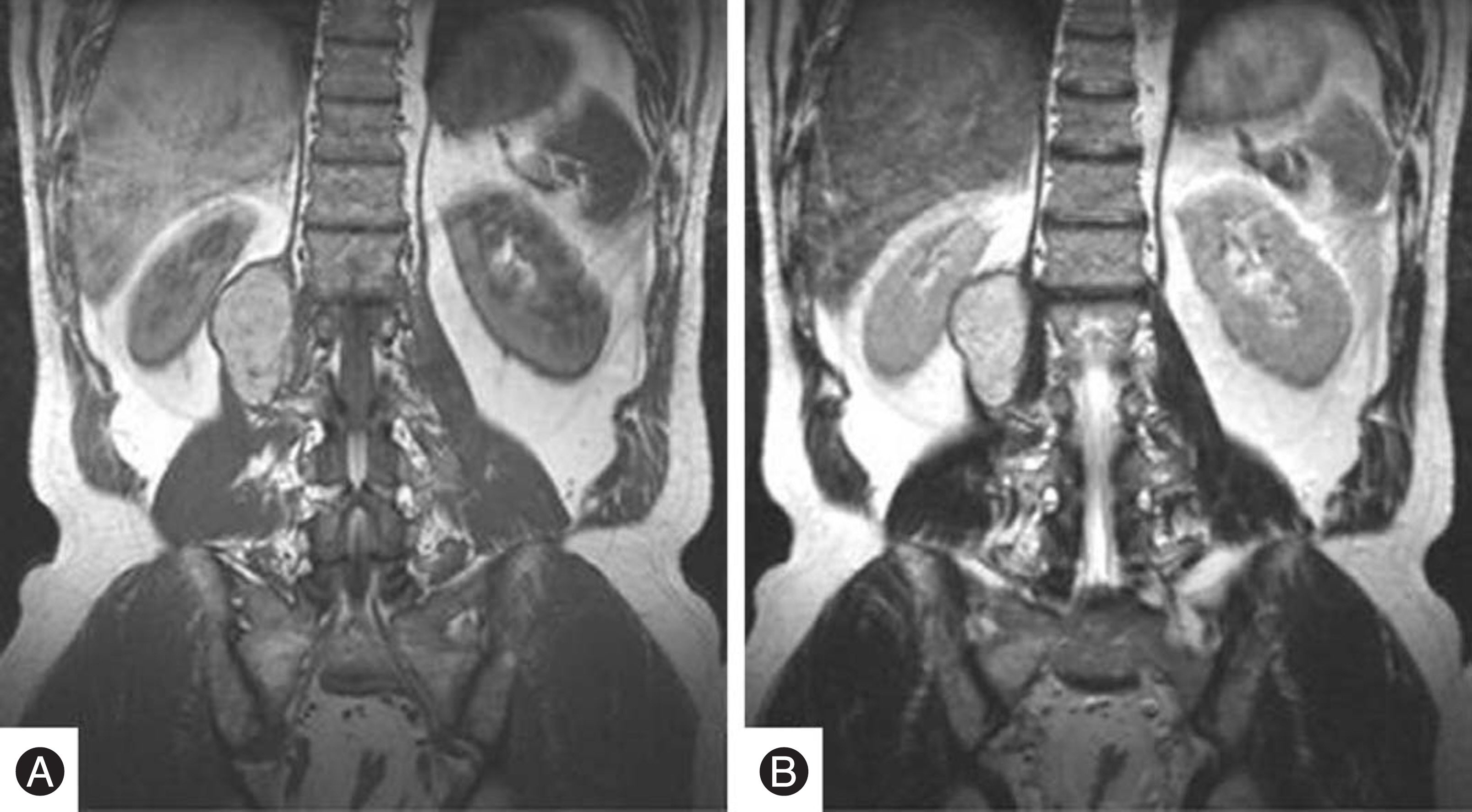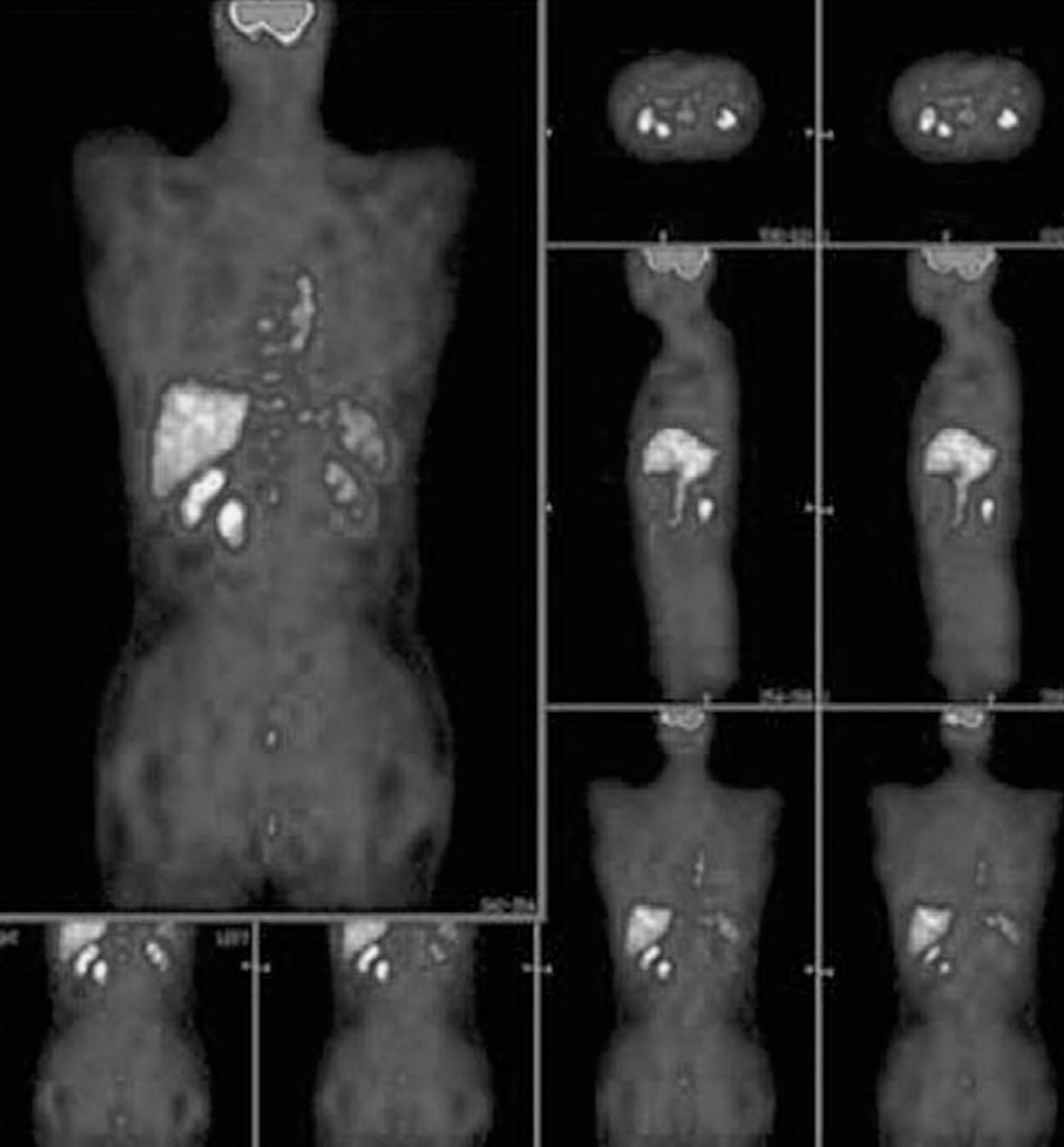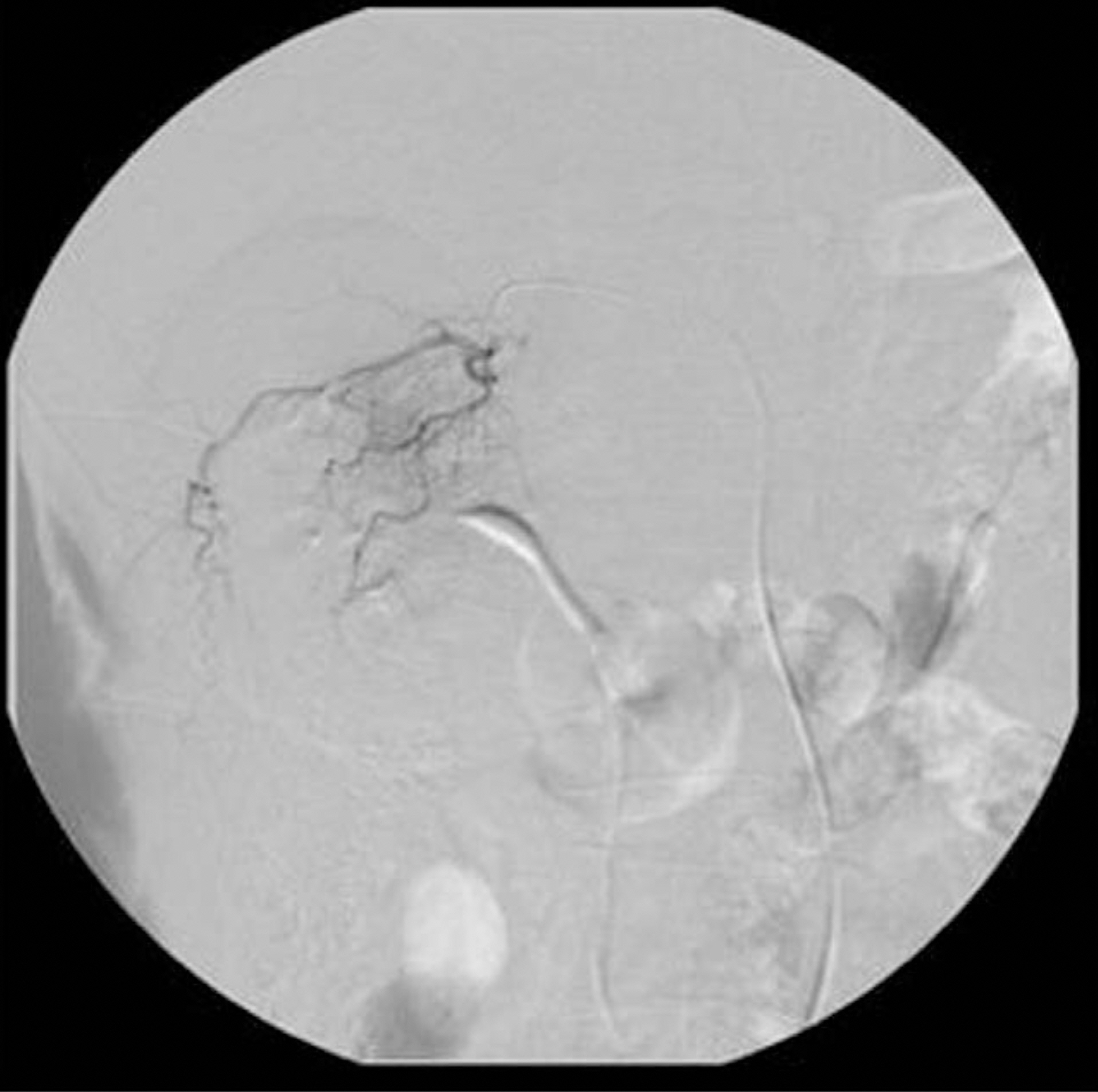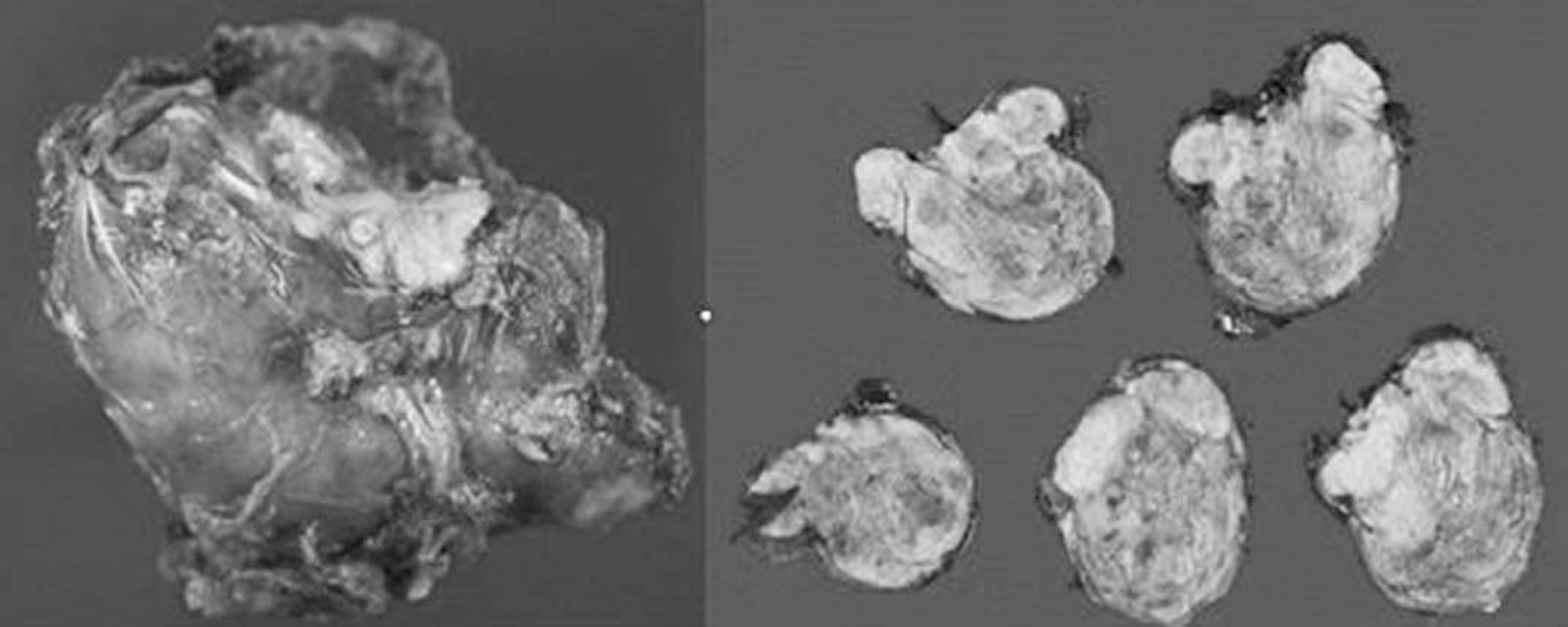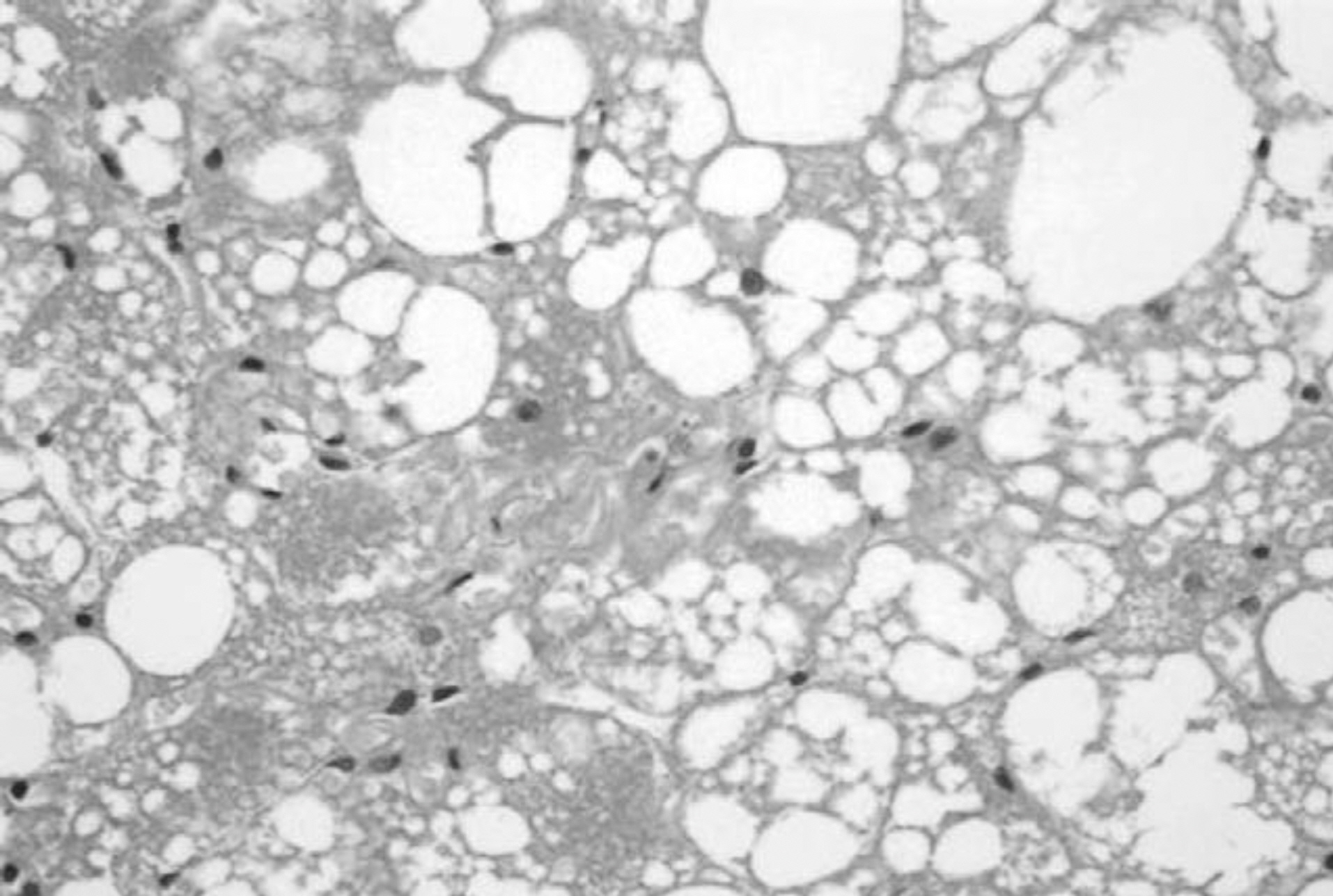J Korean Soc Spine Surg.
2006 Dec;13(4):306-310.
Hibernoma in Psoas Muscle: A Case Report
- Affiliations
-
- 1Department of Orthopedic Surgery, Yonsei University College of Medicine, Korea. mes1007@yumc.yonsei.ac.kr
- 2Department of Orthopaedic Surgery, National Health Insurance Corporation Ilsan Hospital, Korea.
- 3Department of Diagnostic Pathology, Yonsei University College of Medicine, Korea.
Abstract
- Hibernoma is a rare benign tumor of a brown fat origin with hypervascularity. Although the magnetic resonance imaging features resemble a liposarcoma, its malignant potential is unknown. A complete local excision with meticulous hemostasis is the treatment of choice. We present a case of hibernoma in the psoas muscle with a review of the relevant literature.
Keyword
MeSH Terms
Figure
Reference
-
1). Meckel H. On a Pseudolipoma of the breast. Beitr Pathol Anat. 1906; 39:152–157.2). Furlong MA, Fanburg-Smith JC, Miettinen M. The Morphologic Spectrum of Hibernoma: A Clinicopatholog-ic Study of 170 Cases. The American Journal of Surgical Pathology. 2001; 25:809–814.3). Enzinger FM, Weiss SW. Soft Tissue Tumors. London: CV Mosby;p. 234–241. 1983.4). Lee TJ, Park IS, Kim MG, Cho KJ, Moon KH, Lim KY. Axillary Hibernoma: MRI Characteristics. J of Korean Orthop Assoc. 2004; 39:335–338.5). Lewandowski PJ, Weiner SD. Hibernoma of the Medial Thigh. Clinical Orthopaedics and related research. 1996; 330:198–201.
Article6). Cook MA, Stern M, de Silva RD. Case report: MRI of hibernoma. J Comput Assis Tomogr. 1996; 20:333–335.7). McLane RC, Meyer LC. Axillary Hibernoma: Review of the literature with report of a case examined angiographi-cally. Radiology. 1978; 127:673–679.
Article8). Munk PL, Lee MJ, Janzen DL. Lipoma and liposarcoma: Evaluation using CT and MR imaging. AHR AM J Roentgenol. 1997; 169:589–594.
Article

